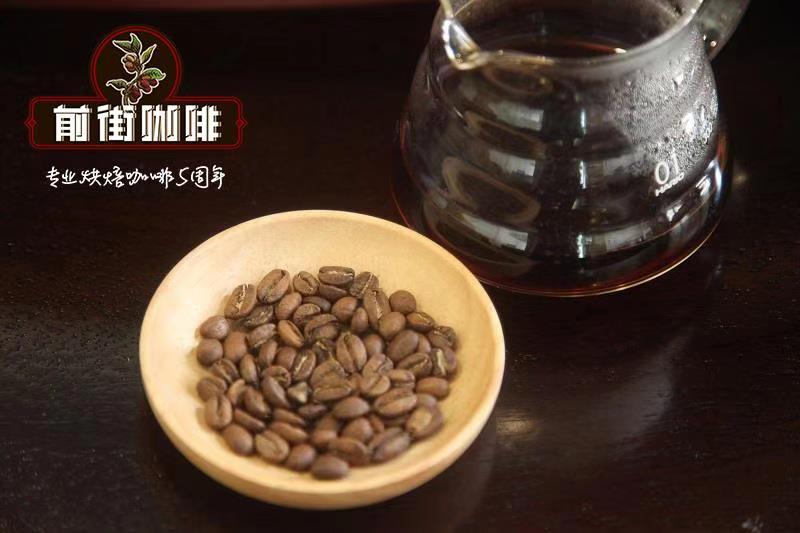What are the coffee bean import and export countries? which country is the largest coffee exporter in the world?

Professional coffee knowledge exchange More coffee bean information Please pay attention to coffee workshop (Weixin Official Accounts cafe_style)
People who like to drink single beans like to drink Colombia coffee very much. The aroma of Colombia coffee is rich and thick. It is not as strong as Brazilian coffee, nor is it like African coffee with obvious acid tone, but with clear high-quality acidity, high balance, sometimes nutty flavor, which makes people have endless aftertaste. No matter in appearance or quality, Colombia coffee is quite excellent, just like a woman's faint charm, charming and just right, which makes people miss.
Colombia is located in northwest South America, bordered by the Pacific and Atlantic Oceans. Panama in the northwest, Venezuela in the east, Brazil in the southeast, Peru in the south, and Ecuador in the southwest.
Coffee was first introduced to Colombia in 1808 by a priest from the French Antilles via Venezuela. It is the second largest coffee producer after Brazil, the world's largest exporter of Arabica coffee beans and the world's largest exporter of washed coffee beans.
Planting climate and season
Colombia geographical environment, beautiful mountains and rivers, beautiful scenery, pleasant climate, four seasons such as spring, fresh air, Qinren heart. Colombia's mild climate, humid air and diverse climate make it a harvest season all year round, with different types of coffee maturing at different times. What they grow is the unique quality of Arabica coffee beans, coffee ground from this coffee beans, rich flavor, aftertaste, can be called coffee boutique. Nowadays, many people equate "Colombia coffee" with "high quality" and "good taste."
The latitude of Colombia production area crosses the terrain influence of Andes Mountains, and it is divided into three regions from south to north: north, middle and south; the production season in the north of the south is relatively clear, and the middle has two primary and secondary production seasons according to whether it is north or south. There are two harvest seasons in a year, the main production season is October to January, and the secondary production season is April to July.
Columbian coffee cultivation is distributed along the Andes Mountains, from south to north, roughly divided into northern production areas (green), central production areas (orange, purple) and southern production areas (yellow), of which orange purple areas have two primary and secondary production seasons, green and yellow areas have a production season.
North District
In northern Colombia you will find coffee producing subdivisions of Santander, Norte de Santander, La Guajira, Magdalena, and Cesar.
The region has only one dry season per year-December to March-and one rainy season-April to November. Coffee blooms in March, followed by the rainy season and harvest in October/November.
North Central and South Central
In the north-central and south-central regions of Colombia, there are regions such as Antioquia South, Boiaca, Caldas, Choco, Risaralda, Quíndio, Valle del Cauca North, Cundinamarca and Tolima North.
These regions have two dry seasons and two rainy seasons per year: the dry season from December to February and June to September; and the rainy season from March to May and September to November, resulting in two coffee harvest seasons per year in the region.
In the north-central region, they have a main harvest season from October to December after the end of the second rainy season. However, after the first rainy season ends, they have a smaller harvest season in May and June.
Harvest periods are similar in the central and southern regions: May-June and October-November. However, it does not have primary and secondary harvest seasons, which yield the same amount.
South Zone
In southern Colombia, closer to the equator, coffee grows higher in the mountains. This is a high-quality coffee-growing area: coffee is known for its high acidity and distinctive cup shape.
As in the northern sector, there is only one wet season and one dry season in the region. The dry season lasts from June to September, followed by coffee flowering. The rainy season comes in October and may last until May, but the harvest season usually begins in April and lasts until June.
This is in sharp contrast to the north of the country, where coffee is harvested in autumn. As the harvest period extends to December. In central Colombia, roasters can serve Colombia coffee to customers most of the year.
East Zone
Coffee cultivation is much smaller in eastern Colombia. It includes only Arauca, Casanare, Meta and Caquetá regions.
The region has suffered armed conflict in the past and coffee production support is now a priority. Colombia's National Coffee Producers Association is investing in helping the region grow varieties better suited to its environment, and they are also focusing on helping farmers scale up their farms.
The climate in this area is similar to that in the north. However, there is more rain and humidity.
END
Important Notice :
前街咖啡 FrontStreet Coffee has moved to new addredd:
FrontStreet Coffee Address: 315,Donghua East Road,GuangZhou
Tel:020 38364473
- Prev

Boutique Coffee Manor in El Salvador, Central America | introduction to the History of La Dieras Manor
Professional coffee knowledge exchange more coffee bean information please pay attention to the coffee workshop (Wechat official account cafe_style) El Salvador (El Salvador), compared with neighboring countries Guatemala (Guatemala) and Honduras (Honduras), regardless of output or land area, compared to a smaller Size, but excellent coffee quality, such as high domestic planting rate in Hong Kong.
- Next

Central American coffee beans recommend Honduran oak barrels to ferment litchi orchid coffee beans
Professional coffee knowledge exchange more coffee bean information please follow the coffee workshop (Wechat official account cafe_style) ▲ click follow | focus on the 6th anniversary of coffee roasting more boutique coffee beans please add private Wechat Qianjie, WeChat: (long click to copy) qiannjie Honduras Finca MochaLycheeLan Honduras Moca Manor Litchi Orchid country: made in Honduras
Related
- Does Rose Summer choose Blue, Green or Red? Detailed explanation of Rose Summer Coffee plots and Classification in Panamanian Jade Manor
- What is the difference between the origin, producing area, processing plant, cooperative and manor of coffee beans?
- How fine does the espresso powder fit? how to grind the espresso?
- Sca coffee roasting degree color card coffee roasting degree 8 roasting color values what do you mean?
- The practice of lattes: how to make lattes at home
- Introduction to Indonesian Fine Coffee beans-- Java Coffee producing area of Indonesian Arabica Coffee
- How much will the flavor of light and medium roasted rose summer be expressed? What baking level is rose summer suitable for?
- Introduction to the characteristics of washing, sun-drying or wet-planing coffee commonly used in Mantenin, Indonesia
- Price characteristics of Arabica Coffee Bean Starbucks introduction to Manning Coffee Bean Taste producing area Variety Manor
- What is the authentic Yega flavor? What are the flavor characteristics of the really excellent Yejasuffi coffee beans?

